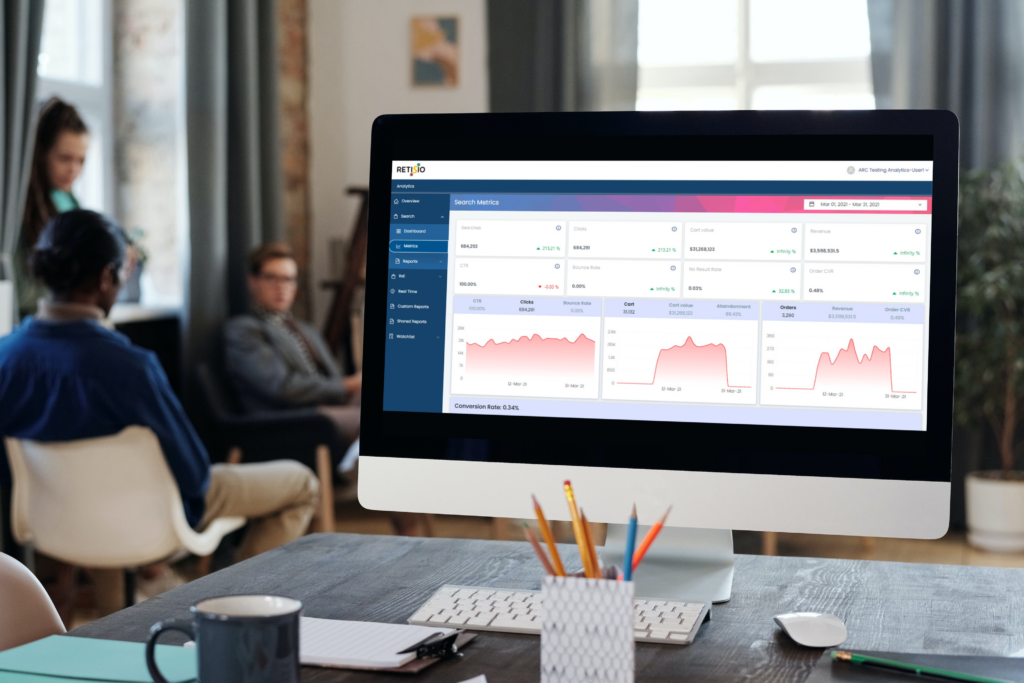Ecommerce replatforming is a crucial process for online businesses looking to upgrade their existing ecommerce platform or migrate to a new one. It involves transferring all the data, functionality, and design elements from one platform to another. However, replatforming can be a complex and challenging task that requires careful planning and execution. In this blog post, we will explore the key steps involved in ecommerce replatforming and provide valuable insights to help you navigate through this process successfully.
Replatforming is a strategic move that can significantly impact your online business. It can help you stay competitive, improve your online store’s performance, and provide a better shopping experience for your customers. However, it’s not a decision to be made lightly. It requires a thorough understanding of your business needs, careful planning, and meticulous execution.
Why Replatforming is Important
Replatforming is not a decision that should be taken lightly. It requires a significant investment of time, resources, and money. So, why should you consider replatforming your ecommerce store? Here are a few reasons:
1. Outdated Technology
If your current ecommerce platform is outdated and no longer meets your business needs, replatforming can help you leverage the latest technologies and features to enhance your online store’s performance. An outdated platform can limit your store’s functionality, slow down your website, and provide a poor user experience.
In fact, according to the Baymard Institute, 12% of US adults abandoned their carts during online shopping because the website had errors or crashed.
By replatforming, you can take advantage of the latest ecommerce technologies and features to improve your store’s performance and provide a better shopping experience for your customers.
2. Scalability
As your business grows, your ecommerce platform needs to be able to handle increased traffic and transactions. Replatforming allows you to choose a platform that can scale with your business and accommodate future growth. A scalable platform can handle increased traffic and transactions without compromising performance. It can also accommodate new features and functionalities as your business grows and evolves.
3. Improved User Experience
A seamless and user-friendly shopping experience is crucial for the success of any ecommerce store. Replatforming gives you the opportunity to enhance the user experience by choosing a platform that offers better navigation, faster page load times, and improved mobile responsiveness. A better user experience can lead to higher customer satisfaction, increased conversion rates, and improved customer retention.
4. Integration Capabilities
If your current platform lacks integration capabilities with other essential business tools and systems, replatforming can help you integrate your ecommerce store with CRM, ERP, inventory management, and other systems to streamline your operations. Integration capabilities can help you automate various business processes, improve data accuracy, and provide a more seamless shopping experience for your customers.
Key Steps in Ecommerce Replatforming
Now that we understand the importance of replatforming, let’s dive into the key steps involved in the process:
1. Define Your Goals and Requirements
Before you start the replatforming process, it’s essential to clearly define your goals and requirements. Ask yourself the following questions:
- What are the specific pain points with your current platform?
- What features and functionalities are you looking for in a new platform?
- What is your budget and timeline for the replatforming project?
By answering these questions, you can create a clear roadmap for your replatforming project and ensure that you choose a platform that aligns with your business goals. It’s also important to involve all relevant stakeholders in this process to ensure that everyone’s needs and expectations are taken into account.
2. Research and Evaluate Platforms
Once you have defined your goals and requirements, it’s time to research and evaluate different ecommerce platforms. Consider factors such as:
- Pricing and licensing models
- Customization options
- Integration capabilities
- Scalability
- Security features
- Support and documentation
Create a shortlist of platforms that meet your criteria and compare them based on these factors. It’s also a good idea to reach out to other businesses or consult with an ecommerce replatforming consultant to get their insights and recommendations. Additionally, consider taking advantage of free trials or demos to get a firsthand experience of the platforms you’re considering.
3. Plan and Prepare for Data Migration
Data migration is one of the most critical aspects of replatforming. It involves transferring all your product data, customer information, order history, and other relevant data from your old platform to the new one. To ensure a smooth data migration process, follow these steps:
- Clean and organize your data: Remove any duplicate or outdated data and ensure that your data is properly structured and formatted.
- Backup your data: Before initiating the migration process, make sure to create a backup of all your data to avoid any potential loss or corruption.
- Map your data: Create a mapping document that outlines how your data will be transferred from the old platform to the new one. This will help you identify any potential data mapping issues and ensure a seamless migration.
Data migration is a complex process that requires careful planning and execution. It’s important to ensure that all your data is accurately transferred to the new platform without any loss or corruption. It’s also crucial to maintain data integrity and consistency during the migration process.
4. Design and Development
Once you have selected a platform and prepared your data for migration, it’s time to focus on the design and development aspects of your new ecommerce store. Consider the following:
- Design: Work with a professional designer or use pre-designed templates to create a visually appealing and user-friendly website design.
- Customization: Customize your store’s layout, colors, fonts, and other design elements to align with your brand identity.
- Development: Hire experienced developers or work with a development agency to implement the desired features and functionalities on your new platform.
The design and development phase is crucial for creating an ecommerce store that not only looks good but also functions well. It’s important to create a design that reflects your brand identity and provides a seamless and enjoyable shopping experience for your customers. It’s also crucial to implement all the necessary features and functionalities to meet your customers’ needs and expectations.
5. Test and Launch
Before launching your new ecommerce store, it’s crucial to thoroughly test its functionality and performance. Conduct user testing to ensure that the navigation is intuitive, the checkout process is smooth, and all the features are working correctly. Additionally, test the website’s performance under different traffic loads to ensure that it can handle high volumes of visitors.
Once you are satisfied with the testing results, it’s time to launch your new ecommerce store. Make sure to redirect your old URLs to the corresponding pages on the new platform to maintain SEO rankings and minimize any potential impact on your organic traffic. It’s also important to communicate with your customers about the transition and provide them with any necessary support or guidance.
6. Post-Launch Optimization
After the launch, it’s important to continuously monitor and optimize your new ecommerce store. Analyze user behavior, track key metrics, and make data-driven decisions to improve the user experience and drive conversions. Regularly update your platform, plugins, and extensions to ensure optimal performance and security.
Post-launch optimization is crucial for the success of your new ecommerce store. It involves continuously monitoring your store’s performance, analyzing user behavior, and making necessary adjustments to improve the user experience and drive conversions. It’s also important to keep your platform, plugins, and extensions up-to-date to ensure optimal performance and security.
Conclusion
Ecommerce replatforming is a complex process that requires careful planning, research, and execution. By following the key steps outlined in this guide, you can successfully replatform your ecommerce store and leverage the latest technologies and features to enhance your online business. Whether you choose to do it yourself or seek the assistance of an ecommerce replatforming consultant, remember that replatforming is an investment that can significantly impact the success of your online store.
Replatforming is a strategic move that can help you stay competitive in the ever-evolving ecommerce landscape. It can provide you with the tools and capabilities you need to meet your customers’ needs and expectations, improve your online store’s performance, and drive business growth. However, it’s not a decision to be made lightly. It requires a thorough understanding of your business needs, careful planning, and meticulous execution. By following the steps outlined in this blog post, you can navigate the replatforming process with confidence and achieve a successful outcome.



